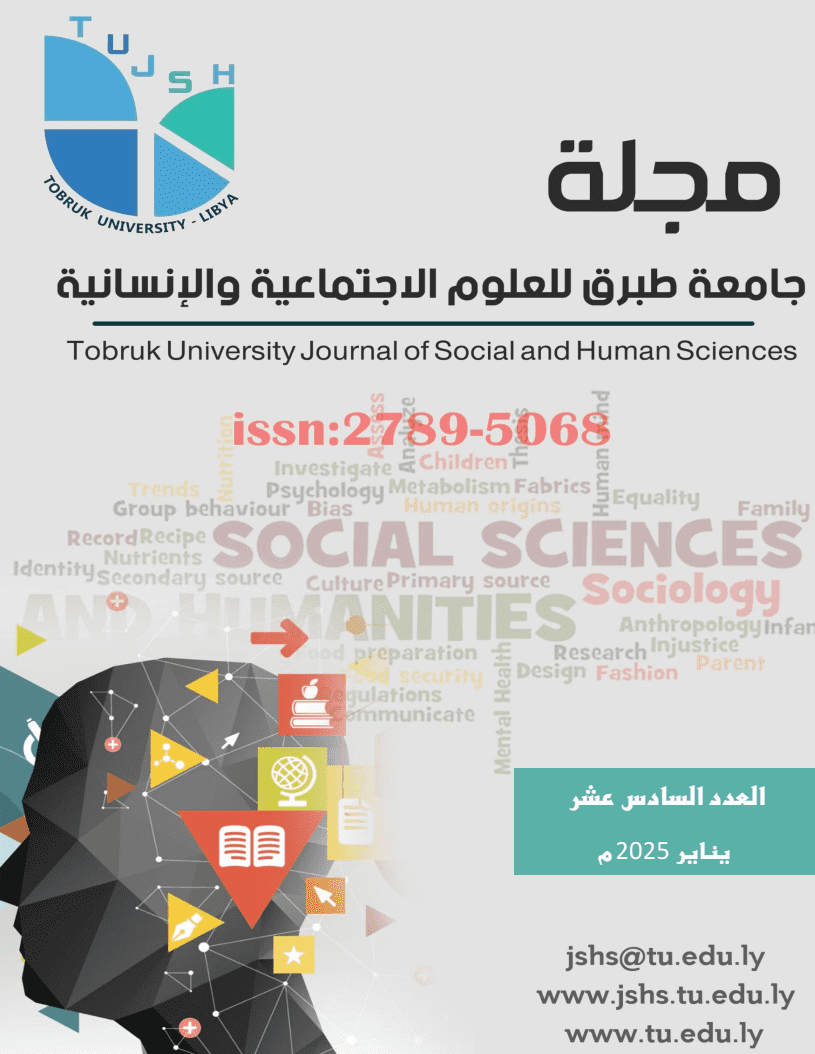EspousingEffective Strategies when Translating Abbreviations
DOI:
https://doi.org/10.64516/0thf8d27Keywords:
Initialisms, Clippings, Latin Abbreviations, Abbreviation, Acronyms, Logograms, Texteses, and BlendingAbstract
.
Abbreviations are concise versions of words or phrases that are commonly used in various types of writing, including formal and informal contexts, as well as in speech, to improve conciseness, clarity, effectiveness, and efficiency. Using abbreviations is a way to save time and space, as well as to avoid repeating long words and phrases or to adhere to established standards. This study seeks to investigate the occurrence of abbreviations in the English language and to identify and analyze the typical mistakes made by translation students at the University of Omar Al-muktar. The study's findings suggest that translation students in their third and fourth years at Omar Al-Muktar University face difficulties in recognizing the source terms used to create abbreviations and generating English abbreviations. Third-year students outperformed fourth-year students in both tasks. More specifically, they demonstrated superior proficiency in forming abbreviations compared to their ability to recognize the original terms. This indicates a requirement for focused teaching and assistance to enhance students' abilities in comprehending and generating English abbreviations, specifically among students in their fourth year.
References
1. Alabbasi, A. (2015). Business Translation(A Theoretical and Practical Study). Sana’a: Al Ameen Publishing & Distribution.
2. Almutairi, M (2017). Investigating category translation shift of abbreviations in news articles from English into Arabic.(n.d.).Arab World English Journal for Translation & Literary Studies,
3. Baker, M. (2018). In other words: A coursebook on translation. Routledge.
4. Bassnett, S. (1980). Translation Studies. Revised. Routledge.
5. Boul Ahdid, A., &Nesart, S. (2014). Dealing with abbreviations in translation (Unpublished master's thesis). KasdiMerbahOuargla University.
6. Hosseinzadeh, F. (2021).Translation of Abbreviations in International Relations (IR). International Journal of Linguistics, Literature and Translation, 4(9), 117-133.
7. Imre, A. (2022). Categorizing and translating abbreviations and acronyms. Open Linguistics, 8(1), 378-389.
8. Lefevere, A. (2016). Translation, rewriting, and the manipulation of literary fame. Routledge.
9. Morel, R. (2019). Why Do We Need Translation? Retrieved from:
10. URL: https://lighthouseonline. com/blog-en/why-do-we-need-translation.
11. Newmark, P. (1988). A textbook of translation (Vol. 66, pp. 1-312). New York: Prentice hall.
12. Nord, C. (1997). Translating as a purposeful activity. Manchester: St. Routledge.
13. Venuti, L. (2017). The translator's invisibility: A history of translation. Routledge.
14. Winward, K. D. (2018). Chicago Manual of Style Online. The Charleston Advisor, 20(2), 15-19.
Downloads
Published
Issue
Section
License
Copyright (c) 2025 د. صلاح آدم (Autor/in)

This work is licensed under a Creative Commons Attribution 4.0 International License.








